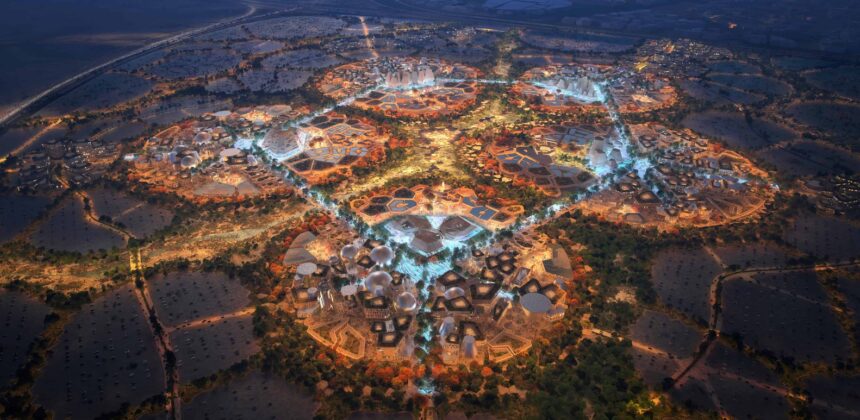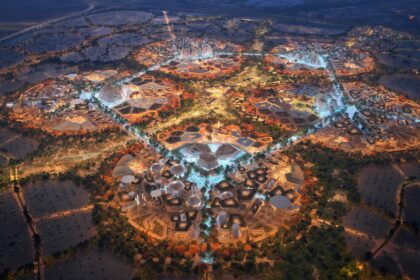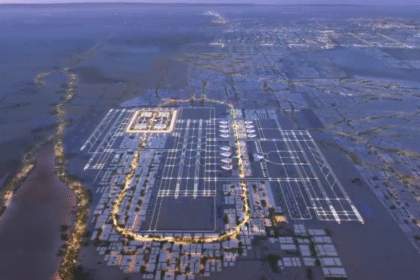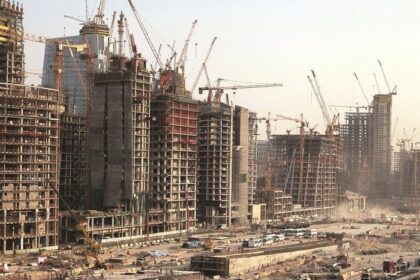Riyadh 2030: A Capital Transformed
Riyadh’s transformation is a cornerstone of Vision 2030, aimed at doubling the population from 7 to 15 million and turning the capital into a modern, polycentric metropolis with enhanced urban quality, logistics, and cultural vitality.
In the city’s historic core, the Diriyah Gate project—one of the world’s largest heritage restoration programs—is underway. Its first phase has been completed, with full delivery expected by the end of 2027. The project includes over 20 hotels, museums, business spaces, and pedestrian zones. In New Murabba, groundwork is being laid for a futuristic business district anchored by the cube-shaped Mukaab (400m x 400m), with construction beginning in 2025.
To the east, King Salman Park (16 km²) is emerging as the region’s largest green zone, with engineering and landscaping works completed and surrounding developments underway. In the southwest, Qiddiya is expanding with a focus on sports, culture, and entertainment.
A major milestone came in December 2024 with the full operation of Riyadh Metro—6 lines, 176 km, 85 stations—integrated with surface transport to create a new mobility framework.
Tens of billions of riyals are being invested in road infrastructure, including highway expansions (Riyadh Ring Roads), overpasses, interchanges, and pedestrian bridges. Connectivity to emerging hubs—Diriyah, Qiddiya, and New Murabba—is a top priority, alongside digital traffic control systems.
By 2030, King Salman International Airport (KSIA) will be operational—featuring six runways, a 57 km² area, and a passenger capacity of 120 million. By 2025, planning and key EPC contracts will be completed.
Despite budgetary challenges and coordination risks, Riyadh is the largest construction zone in the region, offering immense opportunities for contractors, suppliers, and engineering firms.
“The reimagining of Riyadh sets a global benchmark for future capitals. It attracts both large contractors and agile, specialized teams capable of working under dense project loads and high technical standards,” noted Igor Bukato, international construction and infrastructure expert.









